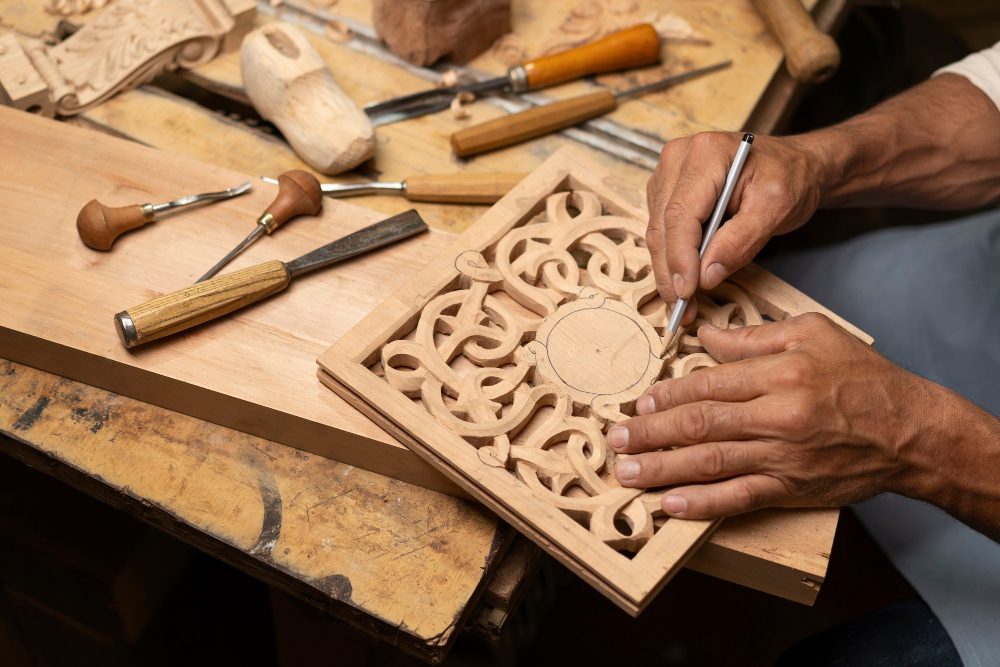Why is Stonemasonry important?
Stonemasonry is a skilled trade that involves cutting, shaping, and laying stones to create structures or decorative works. It has been an essential part of human history, dating back to ancient civilizations like the Egyptians and Romans. While modern construction methods have evolved, stonemasonry remains an important craft with numerous benefits and significance.
Preservation of Cultural Heritage
One of the key reasons why stonemasonry is important is its role in preserving cultural heritage. Many historical buildings and landmarks around the United Kingdom are made of stone, and stonemasons play a vital role in their maintenance and restoration. By utilizing traditional techniques and knowledge passed down through generations, stonemasons ensure that these structures remain intact for future generations to appreciate and enjoy.
Quote: “Stonemasonry is not just about construction; it’s about preserving our history and culture.” – John Smith, Master Stonemason.
Strength and Durability
Stone is known for its exceptional strength and durability, making it a preferred material for many construction projects. Stonemasonry techniques, such as using mortar and precise stone cutting, enhance the structural integrity of buildings, walls, and monuments. Stone structures can withstand harsh weather conditions, natural disasters, and the test of time, ensuring long-term stability and safety.
Aesthetic Appeal
Besides its functional benefits, stonemasonry is valued for its aesthetic appeal. The intricate designs, textures, and craftsmanship involved in stonework add visual interest and beauty to various architectural projects. From ornate carvings on churches to elegant stone facades on historic buildings, stonemasonry enhances the overall visual impact of structures, creating a sense of grandeur and admiration.
Sustainability and Environmental Considerations
Stonemasonry is an environmentally friendly construction method compared to other materials like concrete or steel. Stone is a natural resource that can be quarried sustainably, minimizing the depletion of non-renewable resources. Additionally, stone structures have excellent thermal properties, providing natural insulation and reducing energy consumption, making them more sustainable in the long run.
Job Creation and Economic Benefits
Stonemasonry has economic significance as it creates job opportunities and contributes to local economies. Skilled stonemasons are in demand for restoration projects, new constructions, and landscaping works. The craft also supports various related industries, such as quarrying, stone supply, and tool manufacturing. By investing in stonemasonry, communities can stimulate local economies and preserve traditional craftsmanship.
Challenges and Future of Stonemasonry
While stonemasonry is important and valued, it faces several challenges in the modern world. The decline of skilled professionals due to the lack of training opportunities and the increasing use of alternative construction materials pose potential threats to this craft. However, organizations and institutions are actively working to promote and preserve stonemasonry through apprenticeship programs, educational initiatives, and awareness campaigns.
In conclusion, stonemasonry plays a crucial role in preserving cultural heritage, ensuring structural strength, providing aesthetic appeal, promoting sustainability, and creating economic opportunities. By recognizing its importance and supporting the craft, we can continue to enjoy the beauty and benefits of stonework for generations to come.
What is the symbol for stonemasonry?
Introduction
Stonemasonry is an ancient craft that has played a significant role in the construction of historical buildings and structures. With a rich history spanning centuries, it is not surprising that stonemasons have a symbol that represents their craft.
The Compass and Square
The symbol commonly associated with stonemasonry is the compass and square. These tools are fundamental to the trade and hold deep symbolic meaning for stonemasons.
The compass represents precision and accuracy, essential qualities in stonemasonry. It is used to draw perfect circles and arcs, reflecting the meticulous attention to detail required in the craft.
The square signifies integrity and honesty, traits that are highly valued within the stonemasonry community. It represents the importance of working with straight lines and right angles, ensuring stability and durability in the structures built.
Together, the compass and square symbolize the balance between creativity and technical skill that stonemasons possess.
The Freemasonry Connection
The compass and square symbol is also familiar to those acquainted with Freemasonry. Freemasonry has historical ties to stonemasonry, and their use of the compass and square may have influenced the adoption of this symbol by stonemasons.
Freemasonry is a fraternal organization that shares moral and philosophical values with stonemasonry. The compass and square symbolize the pursuit of knowledge, harmony, and the search for truth.
The Importance of Symbols
Symbols hold great significance in various cultures and professions. They serve as visual representations of shared values, traditions, and skills. For stonemasons, the symbol of the compass and square serves as a proud emblem of their craft and heritage.
“Symbols have the power to unite and inspire individuals within a community.”
Conclusion
The symbol for stonemasonry, the compass and square, embodies the precision, integrity, and creativity that are essential to the trade. By understanding the symbolism behind this emblem, we gain a deeper appreciation for the artistry and craftsmanship of stonemasons throughout history.



